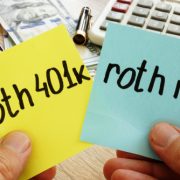What are the Main Types of Self-Directed IRAs?
If you’re a frequent reader of this blog, you’ll notice that we often use the phrase “Self-Directed IRAs” to refer to many different retirement accounts. But as it turns out, Self-Directed IRAs can also have a very specific meaning. For example, a Self-Directed Traditional IRA is a type of Self-Directed IRA. But a Self-Directed Coverdell Education Savings account isn’t an IRA at all. How can you know the difference, and what exactly does a Self-Directed IRA mean, anyway?
In this post, we’ll tackle the specific types of Self-Directed IRAs that give meaning to the name—as well as teach you about what they can do. Note: This post is not about all of the self-directed accounts that investors might have available to them. There are also accounts such as Self-Directed Solo 401(k) plans that, while not mentioned here, you can still read about here at our website.
Self-Directed Traditional IRA: The first account type is also the oldest. The “Traditional” IRA earned its name once other accounts came to prominence, but the Traditional IRA is still in use. This is a before-tax account in which your tax contributions will be deductible, provided that you follow the specific rules. A Self-Directed Traditional IRA can be a choice for many people who aren’t eligible for a Roth IRA for some reasons as well. One of the real benefits of a Self-Directed Traditional IRA is that it lets you deduct your contribution now, which is important for investors who anticipate having a lower income (and therefore tax rate) upon reaching retirement.
Self-Directed Roth IRA: One of the most popular IRAs out there, a Roth IRA provides investors the ability to invest after-tax money. What does this mean? It means that while your contributions won’t be tax-deductible, this money will already be considered taxed. That means that the money in a Roth IRA can grow tax-free; upon retirement, you don’t have to pay additional income taxes on it. For many people, the Roth IRA is their first priority when building a new retirement plan. Like the Traditional IRA, it has a lower contribution limit; otherwise, many investors who anticipate having more money in retirement might put a lot of money away toward this account!
Self-Directed SEP IRA: The Self-Directed SEP IRA, short for Simplified Employee Pension IRA, is a plan that can work for many self-employed individuals who want to create a retirement plan through their business. A SEP IRA has the added advantage of contributions limits that are much higher than both Roth IRAs and Traditional IRAs, depending on what the individual’s circumstances are. The SEP-IRA includes tax-deductible contributions, which represents a chance for investors to save a tremendous amount of money on their tax bill if they plan on investing.
Self-Directed SIMPLE IRA: The last major type of Self-Directed IRA, the SIMPLE IRA is a Savings Incentive Match Plan for Employees (SIMPLE). This is an IRA that typically works for small businesses with some employees, but not large businesses that exceed 99 employees. In this case, your company will have to have fewer than 100 employees. The SIMPLE IRA can be a great way for small businesses to build a retirement plan that serves as a benefit for people who work there, allowing small businesses to attract talent.
IRAs are a large topic, and each of the accounts you read about here can be very important to learn about. Which one is right for you? That will ultimately be your decision as a self-directed retirement investor. Interested in learning more about Self-Directed IRAs? Contact American IRA, LLC at 866-7500-IRA (472) for a free consultation. Download our free guides or visit us online at www.AmericanIRA.com.








